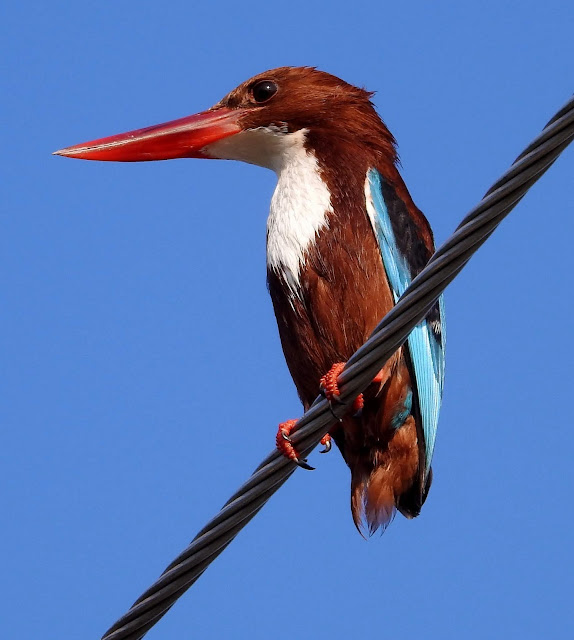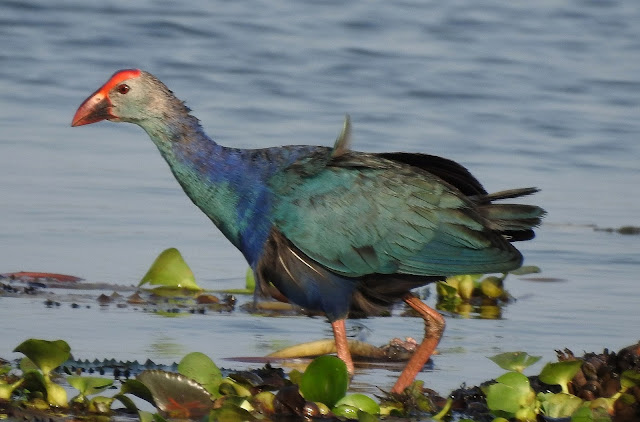This Blog contains Wildlife, Plants and Bird Photos from Walks, Safaris, Birding Trips and Vacations. Most of the pictures have been taken with my Nikon P900 and P950X cameras. Just click on any image for a larger picture. On the right column under the Blog Archive are the entries by date. Below that under Animal categories all the diffent species of Animals, Birds, Insects and Plants contained in the website are listed. Clicking on any entry will show all the entries for that species.
TOTAL PAGEVIEWS
TRANSLATE
Sunday, 15 March 2020
15-3-2020 DUBAI, UAE - DESERT WHEATEAR (FEMALE) (Oenanthe deserti)
15-3-2020 DUBAI, UAE - INDIAN PIED MYNA (Gracupica contra)
Saturday, 14 March 2020
15-3-2020 DUBAI, UAE - PALLAS'S GULL (Ichthyaetus ichthyaetus)
14-3-2020 CHANGARAM WETLANDS KERALA, INDIA - PHEASANT TAILED JACANA (Hydrophasianus chirurgus)
Friday, 13 March 2020
14-3-2020 CHANGARAM WETLANDS KERALA, INDIA - MARSH SANDPIPER (Tringa stagnatilis)
12-3-2020 KERALA, INDIA - BLACK DRONGO (Dicrurus macrocercus)
4-3-2020 KANHA NAT PARK, INDIA - BLACK STORK (ciconia nigra)
Thursday, 12 March 2020
12-3-2020 KERALA, INDIA - BLACK BACKED DWARF KINGFISHER (Ceyx erithaca)
The Black-backed Dwarf Kingfisher, also known as the Three-toed Kingfisher, is a diminutive avian jewel of the Alcedinidae family. This tropical kingfisher is a partial migrant, endemic to the Indian Subcontinent and Mainland Southeast Asia. It is a striking bird with a red bill, yellow-orange underparts, and lilac-rufous upperparts, contrasted by a blue-black back.
Adults of this species can be identified by their black forehead spot, blue and white neck patches, and lilac-rufous crown, rump, and tail. They possess a dark blue back and wings, a white chin and throat, and pale yellow-orange underparts. Their legs, feet, and bill are a vivid red. Juveniles are duller with less lilac and a yellow-orange bill with a pale tip. Both sexes are similar in appearance, with males being slightly larger.
The Black-backed Dwarf Kingfisher favors lowland forests, often near streams or ponds. It thrives in primary and secondary deciduous and evergreen forests, as well as alluvial forests, mangroves, and overgrown plantations.
This species is found in northeastern India, Myanmar, Thailand, Laos, Cambodia, southern China, and disjunctly in southwest India and Sri Lanka. Some northern populations migrate to the Malay Peninsula and Sumatra during the non-breeding season.
12-3-2020 KERALA, INDIA - GREATER SPOTTED EAGLE (Clanga clanga)
Monday, 9 March 2020
9-3-2020 PERIYAR RIVER LODGE, INDIA - GREAT HORNBILL (Buceros bicornis)
During the breeding season (January to April) great hornbills become very vocal. They make loud duets, beginning with a loud "kok" given about once a second by the male, to which the female joins in. The pair then calls in unison, turning into a rapid mixture of roars and barks. They prefer mature forests for nesting. Large, tall and old trees, particularly emergents that rise above the canopy, seem to be preferred for nesting. They form monogamous pair bonds and live in small groups of 2-40 individuals. Group courtship displays involving up to 20 birds have been observed.
The female hornbill builds a nest in the hollow of a large tree trunk, sealing the opening with a plaster made up mainly of feces. She remains imprisoned there, relying on the male to bring her food, until the chicks are half developed. During this period the female undergoes a complete moult. The young chicks have no feathers and appear very plump. The mother is fed by her mate through a slit in the seal. The clutch consists of one or two eggs, which she incubates for 38–40 days. The female voids feces through the nest slit, as do the chicks from the age of two weeks. Once the female emerges from the nest, the chicks seal it again.
The young birds have no trace of a casque. After the second year the front extremity separates from the culmen, and in the third year it becomes a transverse crescent with the two edges growing outwards and upwards, while the anterior widens to the width of the rear end. Full development takes five years.
%20(Oenanthe%20deserti)%2020.jpg)



%2010.jpg)




































%2020.jpg)